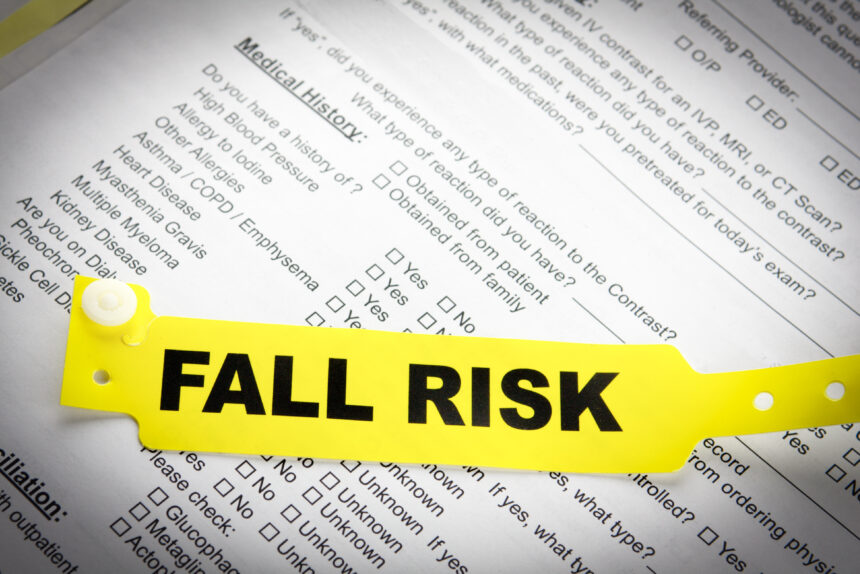Dementia Fall Risk for Beginners
Excitement About Dementia Fall Risk
Table of ContentsThe Ultimate Guide To Dementia Fall RiskNot known Details About Dementia Fall Risk The smart Trick of Dementia Fall Risk That Nobody is DiscussingDementia Fall Risk for Beginners
A loss threat assessment checks to see exactly how most likely it is that you will certainly fall. The assessment typically consists of: This includes a collection of concerns about your total health and if you've had previous drops or problems with balance, standing, and/or walking.STEADI consists of testing, evaluating, and treatment. Interventions are referrals that may lower your danger of dropping. STEADI includes three steps: you for your danger of succumbing to your risk elements that can be boosted to try to protect against falls (for instance, balance issues, impaired vision) to minimize your threat of falling by making use of effective approaches (as an example, giving education and learning and resources), you may be asked numerous concerns consisting of: Have you dropped in the past year? Do you feel unsteady when standing or strolling? Are you worried regarding dropping?, your supplier will evaluate your strength, equilibrium, and stride, using the complying with loss analysis tools: This test checks your stride.
If it takes you 12 seconds or more, it may indicate you are at greater danger for an autumn. This examination checks strength and balance.
Move one foot halfway onward, so the instep is touching the large toe of your other foot. Move one foot totally in front of the various other, so the toes are touching the heel of your various other foot.
Facts About Dementia Fall Risk Uncovered
A lot of falls happen as an outcome of multiple adding factors; as a result, managing the threat of dropping begins with determining the factors that add to drop threat - Dementia Fall Risk. Some of one of the most relevant danger variables include: History of prior fallsChronic medical conditionsAcute illnessImpaired gait and equilibrium, lower extremity weaknessCognitive impairmentChanges in visionCertain risky medicines and polypharmacyEnvironmental variables can also increase the danger for drops, consisting of: Poor lightingUneven or harmed flooringWet or unsafe floorsMissing or damaged handrails and order barsDamaged or improperly equipped equipment, such as beds, wheelchairs, or walkersImproper use assistive devicesInadequate guidance of individuals staying in the NF, consisting of those that display hostile behaviorsA effective loss risk administration program needs a comprehensive scientific analysis, with input from all participants of the interdisciplinary group

The treatment plan ought to also consist of treatments that are system-based, such as those that advertise a risk-free environment (ideal illumination, handrails, get bars, etc). The effectiveness of the interventions must be reviewed periodically, and the treatment strategy changed as required to reflect adjustments in the loss risk analysis. Executing an autumn danger administration system using evidence-based finest method can minimize the occurrence of drops in the NF, while limiting the possibility for fall-related injuries.
The Greatest Guide To Dementia Fall Risk
The AGS/BGS standard advises screening all grownups aged 65 years and older for fall threat each year. This screening includes asking individuals whether they investigate this site have actually dropped 2 or even more times in the past year or looked for medical focus for a fall, or, if they have actually not dropped, whether they really feel unsteady when strolling.
Individuals who have actually dropped once without injury must have their equilibrium and stride reviewed; those with gait or equilibrium irregularities need to get additional assessment. A history of 1 autumn without injury and without gait or balance issues does not require more evaluation beyond ongoing yearly fall threat testing. Dementia Fall Risk. A fall danger evaluation is called for as part of the Welcome to Medicare evaluation

A Biased View of Dementia Fall Risk
Recording a falls useful site history is among the high quality indicators for autumn prevention and management. A vital part of threat evaluation is a medication evaluation. Several classes of medicines enhance fall risk (Table 2). Psychoactive drugs specifically are independent forecasters of falls. These medications have a tendency to be sedating, change the sensorium, and hinder equilibrium and gait.
Postural hypotension can typically be reduced by minimizing the dose of blood pressurelowering drugs and/or quiting medications that have orthostatic hypotension as a side impact. Use above-the-knee support hose pipe and sleeping with the head of the bed raised might also lower postural decreases in blood pressure. The preferred aspects of a fall-focused checkup are displayed in Box 1.

A TUG time more than or equivalent to 12 secs recommends high autumn risk. The 30-Second Chair Stand test assesses reduced extremity her comment is here strength and equilibrium. Being unable to stand up from a chair of knee elevation without utilizing one's arms shows increased loss risk. The 4-Stage Equilibrium test evaluates fixed equilibrium by having the person stand in 4 placements, each gradually much more challenging.